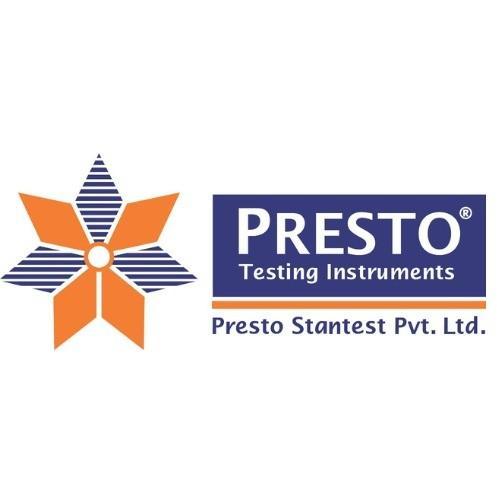- Male
- Followed by 3 people
Recent Updates
- The global automotive surround view systems market size reached US$ 5.2 Billion in 2023. Looking forward, IMARC Group expects the market to reach US$ 18.7 Billion by 2032, exhibiting a growth rate (CAGR) of 14.8% during 2024-2032. Automotive surround view systems refer to intelligent camera systems which provide a complete 360° view of the vehicle on an LCD screen that is placed on the dashboard. These systems play an important role in assisting the driver during parking and maneuvering the vehicle. They also offer other benefits such as enabling the driver to get a sharp view on all sides; removing the blind spots; lowering distractions of the driver and improving traffic safety. Over the years, these systems have evolved from low-resolution to high-resolution cameras, providing real-time bird’s-eye view of the vehicle and its surroundings. These advantages have significantly contributed to the installation of these systems in modern automobiles. Visit us: https://www.imarcgroup.com/automotive-surround-view-systems-marketThe global automotive surround view systems market size reached US$ 5.2 Billion in 2023. Looking forward, IMARC Group expects the market to reach US$ 18.7 Billion by 2032, exhibiting a growth rate (CAGR) of 14.8% during 2024-2032. Automotive surround view systems refer to intelligent camera systems which provide a complete 360° view of the vehicle on an LCD screen that is placed on the dashboard. These systems play an important role in assisting the driver during parking and maneuvering the vehicle. They also offer other benefits such as enabling the driver to get a sharp view on all sides; removing the blind spots; lowering distractions of the driver and improving traffic safety. Over the years, these systems have evolved from low-resolution to high-resolution cameras, providing real-time bird’s-eye view of the vehicle and its surroundings. These advantages have significantly contributed to the installation of these systems in modern automobiles. Visit us: https://www.imarcgroup.com/automotive-surround-view-systems-market0 Comments 0 Shares
- The global IT asset disposition market reached a size of US$ 16.8 billion in 2023, and IMARC Group anticipates it will grow to US$ 31.9 billion by 2032, with a compound annual growth rate (CAGR) of 7.42% from 2024 to 2032. Key factors driving this growth include stricter e-waste regulations, a rising need for environmentally responsible disposal methods, growing data security concerns, and increasing demand for secure data destruction, cost recovery from retired IT assets, and corporate sustainability initiatives. Visit us: https://www.imarcgroup.com/it-asset-disposition-marketThe global IT asset disposition market reached a size of US$ 16.8 billion in 2023, and IMARC Group anticipates it will grow to US$ 31.9 billion by 2032, with a compound annual growth rate (CAGR) of 7.42% from 2024 to 2032. Key factors driving this growth include stricter e-waste regulations, a rising need for environmentally responsible disposal methods, growing data security concerns, and increasing demand for secure data destruction, cost recovery from retired IT assets, and corporate sustainability initiatives. Visit us: https://www.imarcgroup.com/it-asset-disposition-market0 Comments 0 Shares
- The global isostearic acid market reached a value of US$ 494.8 million in 2023, and IMARC Group projects it to grow to US$ 813.4 million by 2032, with a compound annual growth rate (CAGR) of 5.68% from 2024 to 2032. Key factors driving this growth include the increasing use of isostearic acid in coatings and paints, a consumer shift towards sustainable, bio-based products over traditional chemicals, and significant expansion in the personal care industry. Visit us: https://www.imarcgroup.com/isostearic-acid-marketThe global isostearic acid market reached a value of US$ 494.8 million in 2023, and IMARC Group projects it to grow to US$ 813.4 million by 2032, with a compound annual growth rate (CAGR) of 5.68% from 2024 to 2032. Key factors driving this growth include the increasing use of isostearic acid in coatings and paints, a consumer shift towards sustainable, bio-based products over traditional chemicals, and significant expansion in the personal care industry. Visit us: https://www.imarcgroup.com/isostearic-acid-market0 Comments 0 Shares
- The global isoprene market reached a size of US$ 4.8 billion in 2023. According to IMARC Group, the market is projected to grow to US$ 8.3 billion by 2032, with a compound annual growth rate (CAGR) of 6.19% from 2024 to 2032. Key drivers of this growth include the rapid expansion of the automotive industry, rising applications of isoprene in the rubber industry, and advancements in biotechnology that enable isoprene production using microorganisms. Visit us: https://www.imarcgroup.com/isoprene-marketThe global isoprene market reached a size of US$ 4.8 billion in 2023. According to IMARC Group, the market is projected to grow to US$ 8.3 billion by 2032, with a compound annual growth rate (CAGR) of 6.19% from 2024 to 2032. Key drivers of this growth include the rapid expansion of the automotive industry, rising applications of isoprene in the rubber industry, and advancements in biotechnology that enable isoprene production using microorganisms. Visit us: https://www.imarcgroup.com/isoprene-market0 Comments 0 Shares
- The global smart infrastructure market size reached US$ 149.2 Billion in 2023. Looking forward, IMARC Group expects the market to reach US$ 773.3 Billion by 2032, exhibiting a growth rate (CAGR) of 20.06% during 2024-2032. Rapid urbanization and digitalization, the rising need for efficient management and utilization of resources, ongoing technological advancements, and the introduction of numerous favorable government initiatives are some of the major factors propelling the market. Smart infrastructure refers to the integration of advanced technologies and digital systems into various physical infrastructure components, such as buildings, transportation networks, energy grids, and cities. It leverages the power of the Internet of Things (IoT), artificial intelligence (AI), and data analytics to enhance efficiency, sustainability, and connectivity. It encompasses a wide range of applications, including smart buildings with automated controls for lighting, heating, and security, intelligent transportation systems that optimize traffic flow and reduce congestion, renewable energy grids that monitor and manage energy generation and consumption, and smart cities that use data to improve urban planning and resource management. Visit us: https://www.imarcgroup.com/smart-infrastructure-marketThe global smart infrastructure market size reached US$ 149.2 Billion in 2023. Looking forward, IMARC Group expects the market to reach US$ 773.3 Billion by 2032, exhibiting a growth rate (CAGR) of 20.06% during 2024-2032. Rapid urbanization and digitalization, the rising need for efficient management and utilization of resources, ongoing technological advancements, and the introduction of numerous favorable government initiatives are some of the major factors propelling the market. Smart infrastructure refers to the integration of advanced technologies and digital systems into various physical infrastructure components, such as buildings, transportation networks, energy grids, and cities. It leverages the power of the Internet of Things (IoT), artificial intelligence (AI), and data analytics to enhance efficiency, sustainability, and connectivity. It encompasses a wide range of applications, including smart buildings with automated controls for lighting, heating, and security, intelligent transportation systems that optimize traffic flow and reduce congestion, renewable energy grids that monitor and manage energy generation and consumption, and smart cities that use data to improve urban planning and resource management. Visit us: https://www.imarcgroup.com/smart-infrastructure-market0 Comments 0 Shares
- The global silage additives market size reached US$ 2,046.0 Million in 2023. Looking forward, IMARC Group expects the market to reach US$ 2,924.7 Million by 2032, exhibiting a growth rate (CAGR) of 3.9% during 2024-2032. The increasing consumption of animal nutrition, rising demand for dairy products, and the escalating need for enhancing animal yield represent some of the key factors driving the market. Silage additives are added to fermented forage products made from grass, maize, and other crops to improve their quality, stability, and nutritional value. These additives aid in maintaining the preservation process through various inhibitors, such as non-protein nitrogen (NON) and propionates, to delay unwanted silage degradation. They also speed up and enhance the fermentation process and help break down complex carbohydrates, which increase the availability of nutrients and make silage more digestible and nutritious for livestock. Some of the commonly used silage additives include organic acids, mineral acids, enzymes, sugars, absorbents, and bacterial inoculants, such as homofermentative, heterofermentative, and combination products. At present, silage additives are widely used for crops, such as corn, alfalfa, sorghum, oats, rye, barley, wheat, clove, and forage grasses across the globe. Visit us: https://www.imarcgroup.com/silage-additives-market
The global silage additives market size reached US$ 2,046.0 Million in 2023. Looking forward, IMARC Group expects the market to reach US$ 2,924.7 Million by 2032, exhibiting a growth rate (CAGR) of 3.9% during 2024-2032. The increasing consumption of animal nutrition, rising demand for dairy products, and the escalating need for enhancing animal yield represent some of the key factors driving the market. Silage additives are added to fermented forage products made from grass, maize, and other crops to improve their quality, stability, and nutritional value. These additives aid in maintaining the preservation process through various inhibitors, such as non-protein nitrogen (NON) and propionates, to delay unwanted silage degradation. They also speed up and enhance the fermentation process and help break down complex carbohydrates, which increase the availability of nutrients and make silage more digestible and nutritious for livestock. Some of the commonly used silage additives include organic acids, mineral acids, enzymes, sugars, absorbents, and bacterial inoculants, such as homofermentative, heterofermentative, and combination products. At present, silage additives are widely used for crops, such as corn, alfalfa, sorghum, oats, rye, barley, wheat, clove, and forage grasses across the globe. Visit us: https://www.imarcgroup.com/silage-additives-market0 Comments 0 Shares - The global serum-free media (SFM) market reached a value of US$ 1.3 billion in 2023. Looking ahead, the IMARC Group projects the market will grow to US$ 2.7 billion by 2032, with a compound annual growth rate (CAGR) of 8.19% from 2024 to 2032. Key factors driving this growth include the increasing prevalence of infectious and chronic diseases, the rising adoption of SFM in biotechnology and pharmaceutical sectors, and growing awareness of its various advantages.
SFM is a specialized cell culture media that excludes animal-derived serum, instead utilizing defined components such as amino acids, vitamins, hormones, and growth factors to support cell growth and proliferation. This serum-free approach allows for more precise control in cell culture environments, as components can be tailored to meet specific requirements. SFM offers several benefits, including improved performance consistency, enhanced cell growth and productivity, better control over physiological responses, and reduced risk of contamination from adventitious agents found in serum. These attributes make SFM a preferred choice in biopharmaceutical production, helping minimize the introduction of unknown variables into the manufacturing process. For more details, visit us: https://www.imarcgroup.com/serum-free-media-marketThe global serum-free media (SFM) market reached a value of US$ 1.3 billion in 2023. Looking ahead, the IMARC Group projects the market will grow to US$ 2.7 billion by 2032, with a compound annual growth rate (CAGR) of 8.19% from 2024 to 2032. Key factors driving this growth include the increasing prevalence of infectious and chronic diseases, the rising adoption of SFM in biotechnology and pharmaceutical sectors, and growing awareness of its various advantages. SFM is a specialized cell culture media that excludes animal-derived serum, instead utilizing defined components such as amino acids, vitamins, hormones, and growth factors to support cell growth and proliferation. This serum-free approach allows for more precise control in cell culture environments, as components can be tailored to meet specific requirements. SFM offers several benefits, including improved performance consistency, enhanced cell growth and productivity, better control over physiological responses, and reduced risk of contamination from adventitious agents found in serum. These attributes make SFM a preferred choice in biopharmaceutical production, helping minimize the introduction of unknown variables into the manufacturing process. For more details, visit us: https://www.imarcgroup.com/serum-free-media-market0 Comments 0 Shares
More Stories










